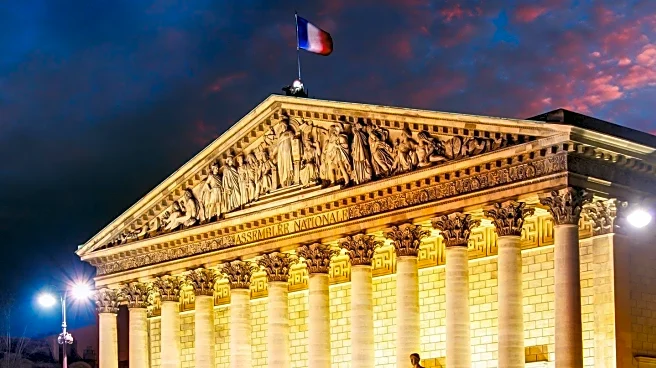What's Happening?
An attendant at the Louvre Museum has shared her experience during the recent jewel heist, describing the chaos as thieves broke into the Gallery of Apollo. The thieves used an angle grinder to enter through
a reinforced window, seizing treasures worth an estimated €88 million. The attendant initially mistook the noise for an angry visitor but quickly realized it was a robbery. She alerted colleagues and visitors, helping to evacuate the gallery. The thieves used a mechanical ladder to access the balcony, escaping with items including a necklace and diadem belonging to French royalty.
Why It's Important?
The attendant's account provides insight into the immediate impact of the heist on museum staff and visitors, highlighting the need for effective emergency protocols in cultural institutions. The incident underscores the importance of training staff to respond swiftly to security breaches, potentially minimizing damage and ensuring safety. The theft of historically significant items raises concerns about the preservation of cultural heritage and the challenges in recovering stolen artifacts. The event may prompt museums to reassess their security measures and staff preparedness.
What's Next?
The Louvre Museum is expected to review its security protocols and staff training to prevent future incidents. Authorities are likely to intensify their investigation, focusing on recovering the stolen items and apprehending the culprits. The museum may implement additional security measures, such as upgrading surveillance systems and reinforcing display cases. The incident could lead to broader discussions on museum security standards and the allocation of resources for cultural heritage protection.
Beyond the Headlines
The heist has raised questions about the ethical implications of displaying valuable artifacts in public spaces, balancing accessibility with security. The event may influence cultural policies regarding the protection and insurance of national treasures, potentially leading to stricter regulations. Additionally, the theft highlights the vulnerability of cultural institutions to sophisticated criminal operations, prompting a reevaluation of security strategies and collaboration with law enforcement agencies.












